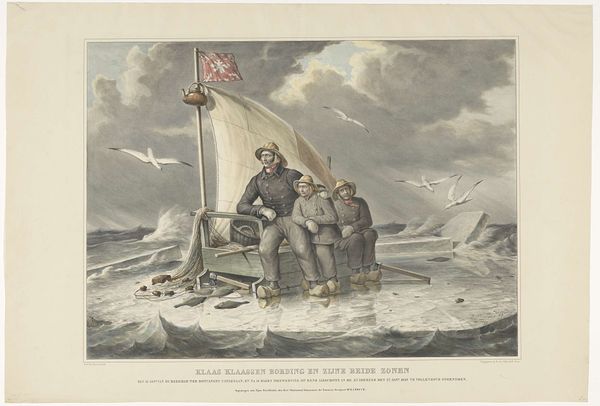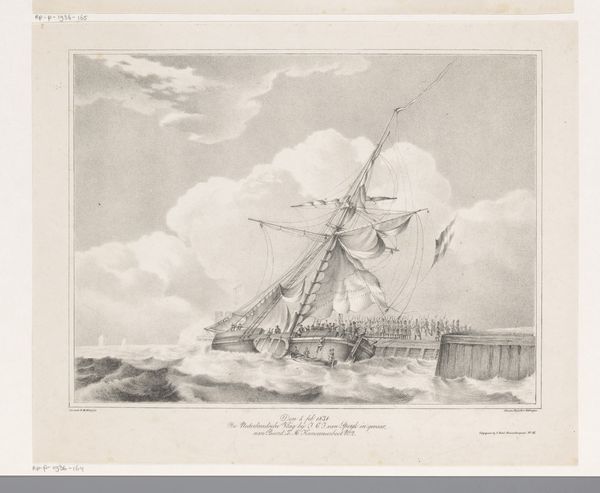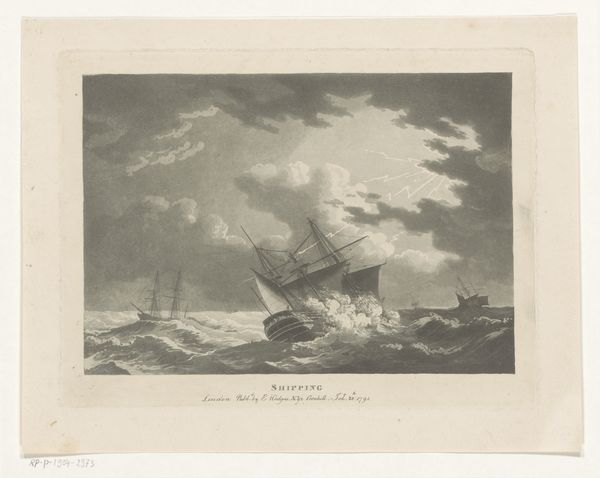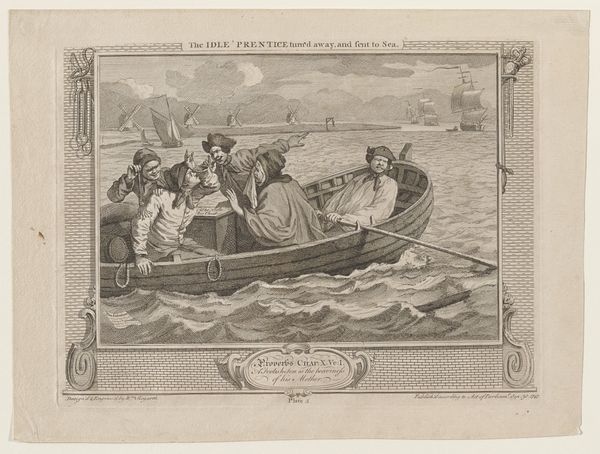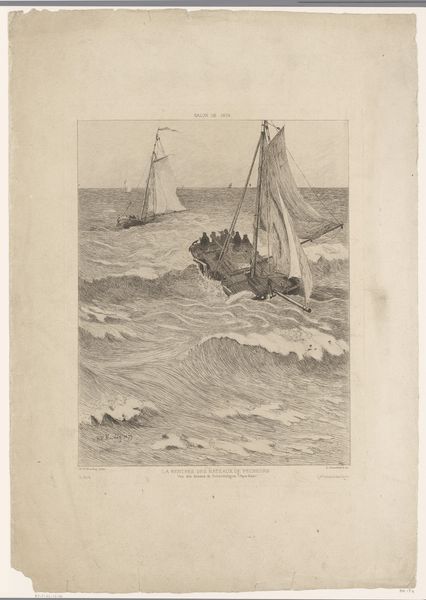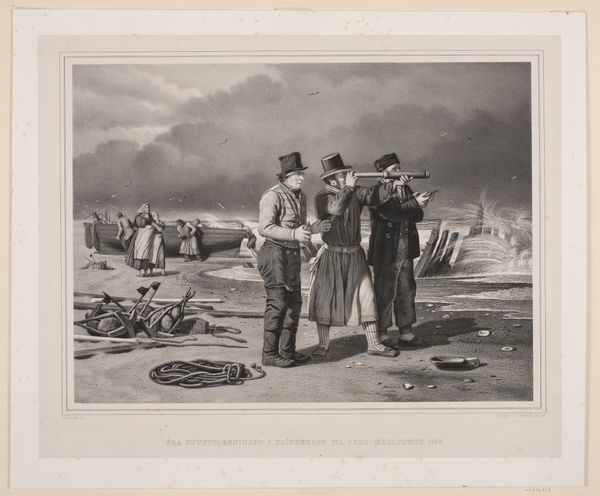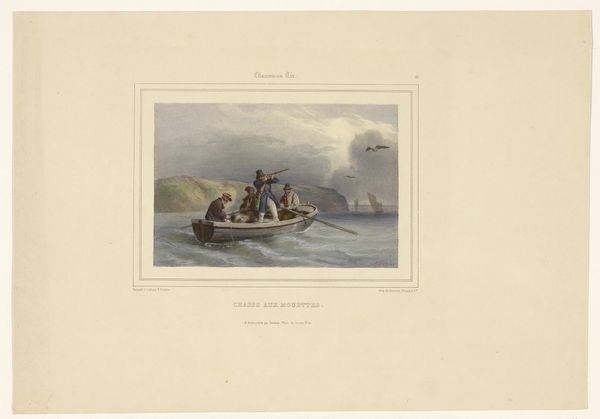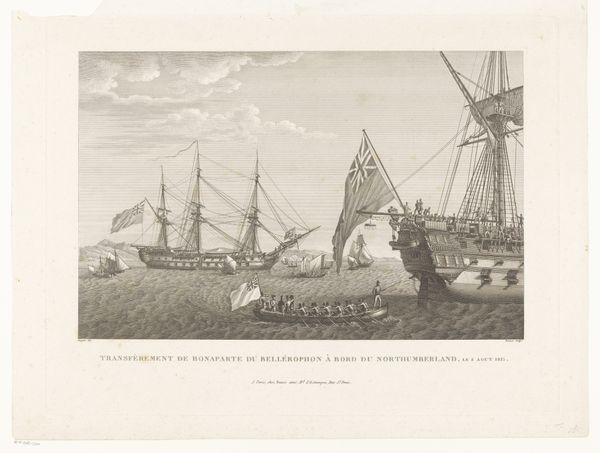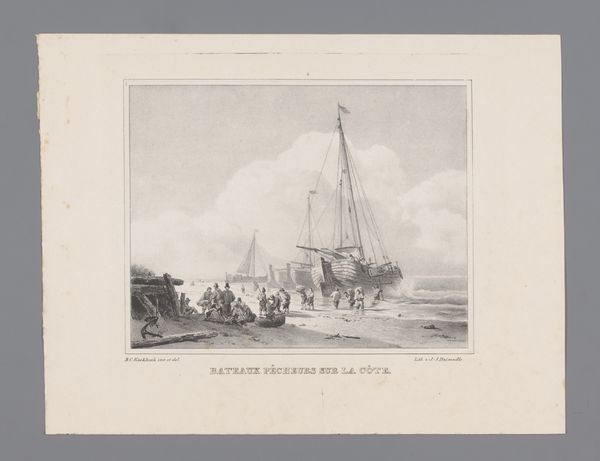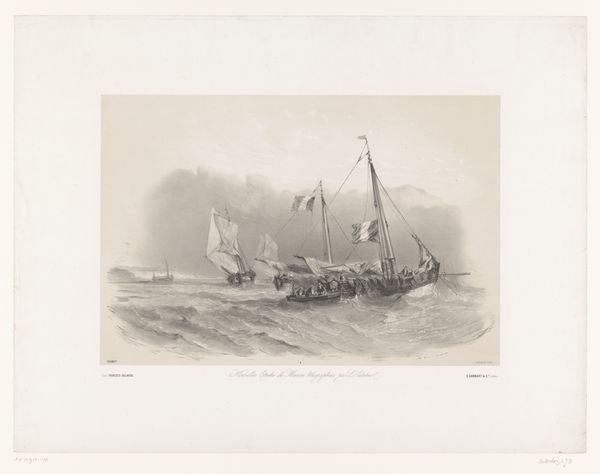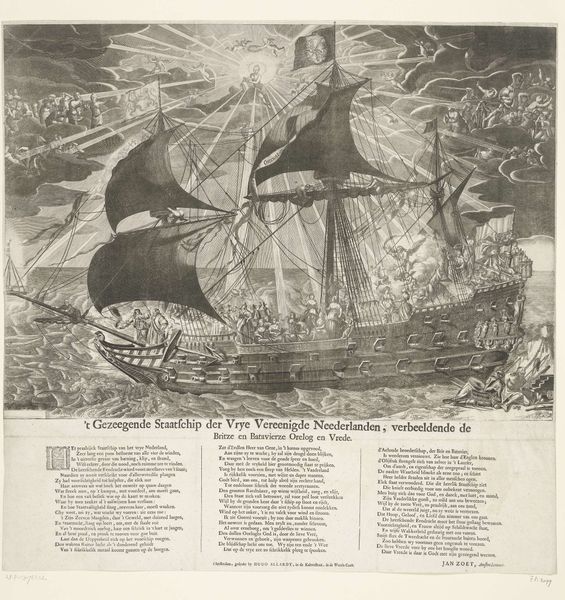
Klaas Klaassen Bording en zijne beide zonen den 13 Jan.ij van Durgerdam ter botvangst uitgegaan, en na 14 dagen omzwerving op eene ijsschots in de Zuiderzee den 27 Jan,ij 1849 te Vollenhove opgenomen 1849
0:00
0:00
jacobplugger
Rijksmuseum
print, engraving
# print
#
old engraving style
#
landscape
#
19th century
#
genre-painting
#
engraving
#
realism
#
sea
Dimensions: height 617 mm, width 880 mm
Copyright: Rijks Museum: Open Domain
Curator: This is "Klaas Klaassen Bording en zijne beide zonen den 13 Jan.ij van Durgerdam ter botvangst uitgegaan, en na 14 dagen omzwerving op eene ijsschots in de Zuiderzee den 27 Jan,ij 1849 te Vollenhove opgenomen," created in 1849 by Jacob Plügger. It’s an engraving printed on paper, currently held at the Rijksmuseum. The image captures a man and his two sons on an ice floe. Editor: It’s stark. The monochromatic palette, the unforgiving waves... you really get a sense of isolation and desperation. They're adrift on this shrinking piece of ice. It hits you viscerally. Curator: Exactly. The material conditions and their implications are key here. Plügger's choice of engraving, a reproductive medium, allowed for wider distribution of this narrative. Consider how printmaking democratizes access; suddenly, stories of hardship like this are circulating broadly. It’s a contrast to the traditional exclusivity of painting. Editor: I think there is a stark message of survival but also the social realities of maritime labor and its perils. The North Sea fishing industry was rife with risks and the economic disparities that pushed families like this to brave such dangers. Notice their expressions, how they barely meet your gaze: a direct consequence of those circumstances. Curator: The material choice of clothing, too: note the heaviness of the fabrics, the wooden shoes – designed for durability in the harsh maritime climate, albeit inadequate for their predicament. The etching allows for the conveyance of tactile experience through visual data: you can nearly *feel* the roughspun cloth and taste the salt spray, further conveying their struggle for survival and their exploitation of resources. The fishing net, draped over the side is now only ornamental... Editor: Precisely! Also, to look at the gendered division of labor, right? It depicts Klaas and his sons, reflecting familial and generational roles within fishing communities, from the father teaching children. This engraving allows reflection on broader structures that govern society! Curator: An excellent point, placing it within broader familial economics. A good reminder of why looking at production can deepen our reading. This print started off as a way of narrating news. Now look how rich its significance is! Editor: Indeed. Looking at how artworks interact with audiences across centuries continues to add nuance to the tale they tell!
Comments
No comments
Be the first to comment and join the conversation on the ultimate creative platform.
